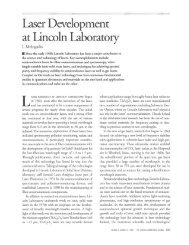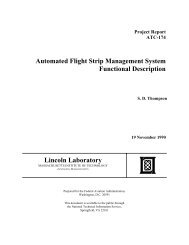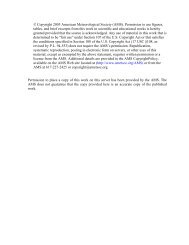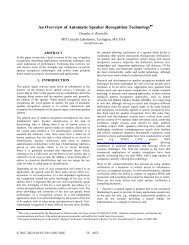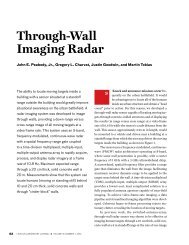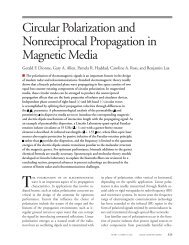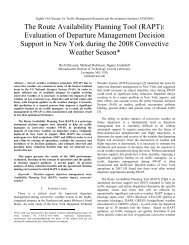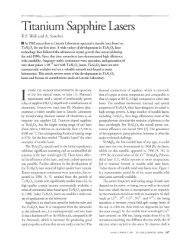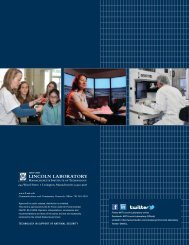2011 MIT Lincoln Laboratory Facts
2011 MIT Lincoln Laboratory Facts
2011 MIT Lincoln Laboratory Facts
You also want an ePaper? Increase the reach of your titles
YUMPU automatically turns print PDFs into web optimized ePapers that Google loves.
<strong>Lincoln</strong> <strong>Laboratory</strong> Logo<br />
The <strong>Lincoln</strong> <strong>Laboratory</strong> logo, which first<br />
appeared in February 1958 in the <strong>Lincoln</strong><br />
<strong>Laboratory</strong> Bulletin, was conceived by Carl<br />
Overhage, the <strong>Laboratory</strong>’s fourth director.<br />
Overhage drew a Lissajous figure based on the<br />
superposition of two simple harmonic vibrations and<br />
commissioned retired Brigadier General Robert Steinle<br />
and the firm Advertising Designers of Los Angeles to<br />
transform the Lissajous figure into an artistic image.<br />
The two L’s rotated 180 degrees with respect to each<br />
other stand for <strong>Lincoln</strong> <strong>Laboratory</strong>. They form a rectangle<br />
enclosing the Lissajous figure generated by the parametric<br />
equations x = 3 sin(8πt/T ) and y = 4 sin(6πt/T ). The<br />
figure is traced along the horizontal axis x and the vertical<br />
axis y as the variable t progresses from t = 0 to T.<br />
The <strong>Lincoln</strong> <strong>Laboratory</strong> logo is an identifying symbol<br />
on <strong>Laboratory</strong> publications and its website. Because of its<br />
distinctive and striking appearance, it was included in the<br />
1972 edition of The Book of American Trademarks, a compilation<br />
of the nation’s most significant trademarks, logos, and<br />
corporate symbols.<br />
Lissajous Figure<br />
The Lissajous figure, familiar to most<br />
physical scientists and engineers, connotes<br />
harmony, order, and stability. The Lissajous<br />
figures, named for the French mathematician Jules-<br />
Antoine Lissajous, are also known as Bowditch<br />
curves after their discoverer, Nathaniel Bowditch,<br />
the mathematician from Salem, Massachusetts.<br />
Overview 3



